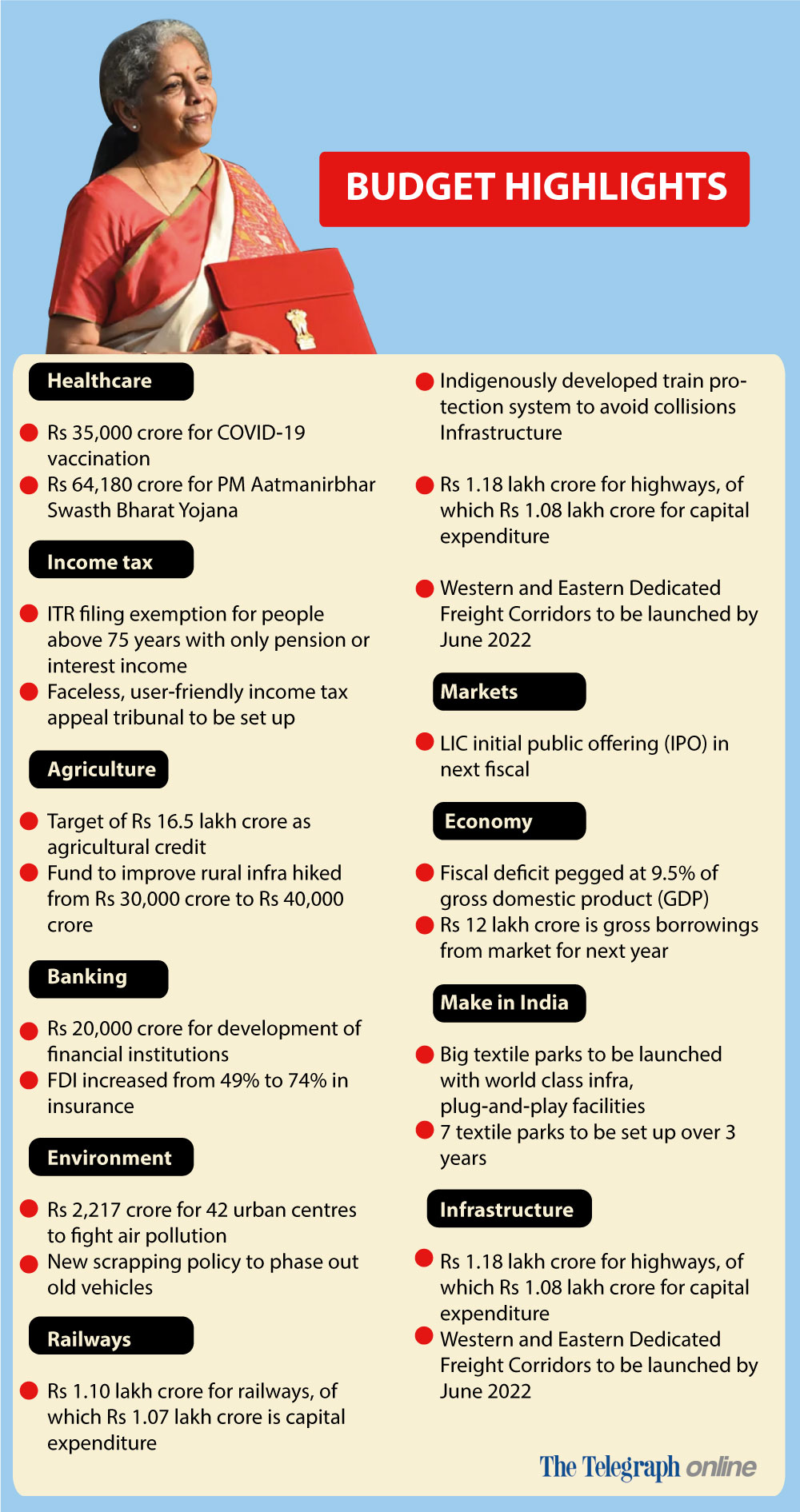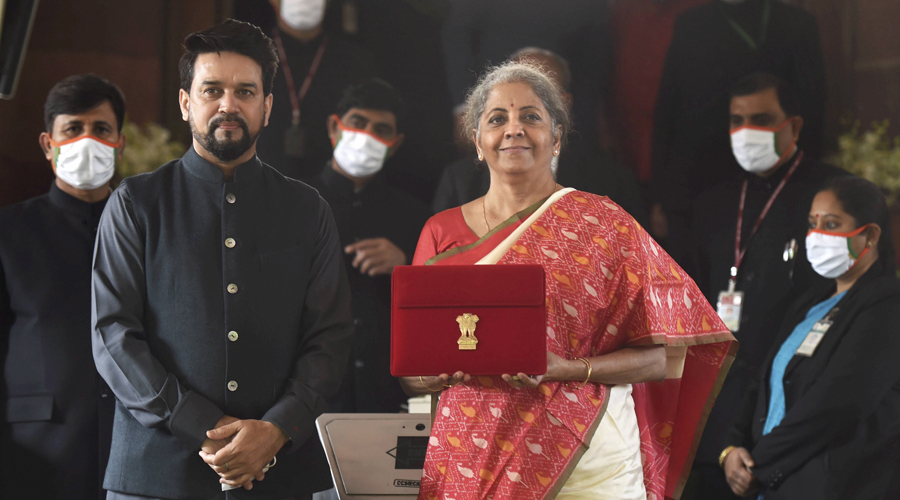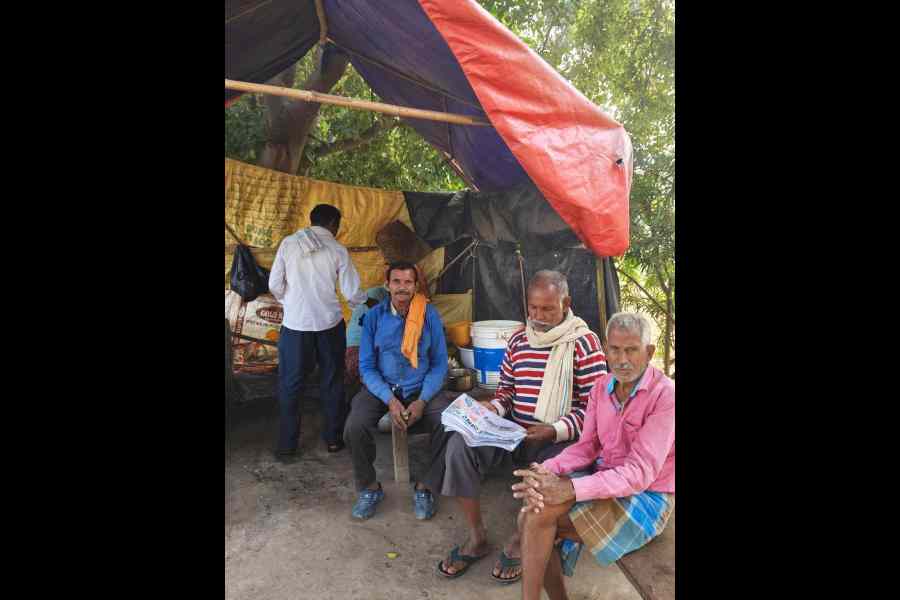Finance Minister Nirmala Sitharaman unveiled a growth-oriented budget that included a nearly 140 per cent hike in healthcare spending and declared the government was “fully prepared” with measures to pull the Covid-hit economy out of an unprecedented contraction.
The budget targeting a “self-reliant India” provides every opportunity for our economy to "capture the pace that it needs for sustainable growth,” Sitharaman said, who set a precedent by reading her speech to parliament from a computer tablet.
Sitharaman said her budget rested on various pillars that included spending on health infrastructure, physical and financial capital and infrastructure, inclusive development for an “aspirational India”, innovation and R&D, and minimum government and maximum governance.
"The government is fully prepared to support and facilitate the economy's reset," Sitharaman said.
Highlighting the difficulties of the government’s financial situation during the ongoing pandemic, Sitharaman announced a massive fiscal deficit of 9.5 per cent for the current fiscal year, blowing out the 3.5 per cent target set in the last budget. For the next year, the government targeted a deficit of 6.8 per cent. Covid-19 has slashed growth, reducing tax revenues at the same time as increasing the requirement for higher spending to bolster the economy.

Under the budget, a new centrally sponsored scheme, PM AtmaNirbhar Swasth Bharat Yojana, will be launched with an outlay of about Rs 64,180 crore over six years. “This will develop capacities of primary, secondary, and tertiary care Health Systems, strengthen existing national institutions, and create new institutions, to cater to detection and cure of new and emerging diseases,” she said. For the current year, the Budget outlay for health and wellbeing will be increased by 137 per cent to Rs 223,846 crore.
For India to attain its target of becoming a $5 trillion economy, Sitharaman said the manufacturing sector must post double-digit growth and its manufacturing companies need to become an integral part of global supply chains, possess core competence and cutting-edge technology.
To achieve these goals, schemes to create “manufacturing global champions for an AtmaNirbhar Bharat” have been announced for 13 sectors, she said. For this, the government has committed nearly Rs 1.97 lakh crore over five years starting in the next fiscal year starting April 1. “This initiative will help bring scale and size in key sectors, create and nurture global champions and provide jobs to our youth,” Sitharaman said.
To enable the textile industry to become globally competitive, attract large investment and boost job creation, a Mega Investment Textiles Parks or MITRA scheme will be launched. Sitharaman said this will create world class infrastructure with plug-and-play facilities to create “global champions in exports.” She said seven textile parks will be established over three years.
She said the government’s National Infrastructure Pipeline (NIP), “a first-of-its-kind, whole-of-government exercise,” was launched in December covering 6,835 projects. That the project pipeline has now expanded to 7,400 projects. Around 217 projects worth Rs 1.10 lakh crore under some key infrastructure ministries have been completed.
She said the NIP is a specific target which this government is committed to achieving over the coming years and will require a major increase in funding both from the government and the financial sector. To accomplish these objectives, she said she would in this budget create the institutional structures; put a big thrust on monetizing assets, and thirdly enhance the share of capital expenditure in central and state budgets.
She also announced plans to create a Development Financial Institution (DFI) to act as a provider, enabler and catalyst for infrastructure financing and provided a sum of Rs 20,000 crore to capitalise the institution. “The ambition is to have a lending portfolio of at least Rs 5 lakh crore for this DFI in three years time,” she said.










